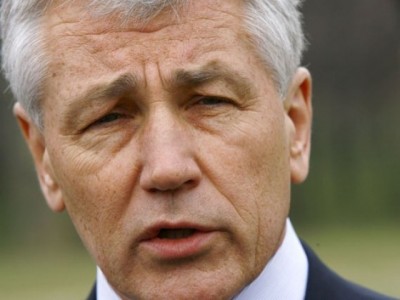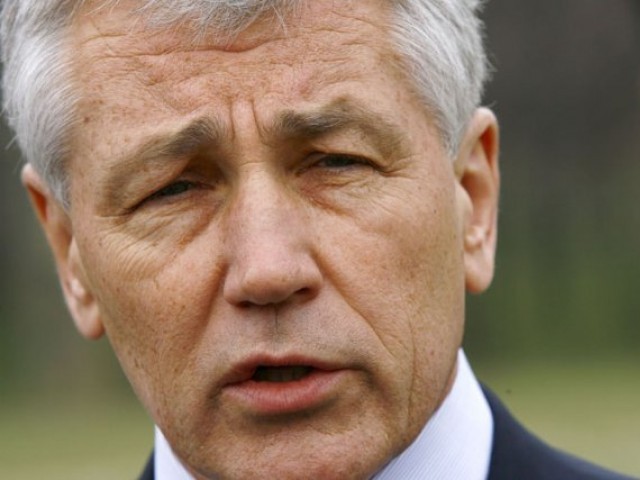 U.S. Defense Secretary Chuck Hagel arrived today in New Delhi seeking to remove barriers to the sale of American weaponry to India, the world’s largest arms buyer.
U.S. Defense Secretary Chuck Hagel arrived today in New Delhi seeking to remove barriers to the sale of American weaponry to India, the world’s largest arms buyer.
Boeing Co. wants to sell more helicopters in India, and Lockheed Martin Corp. is keen on exporting transport planes and providing technology for an Indian version of an anti-tank missile it makes with Raytheon Corp.
Standing in the way are Indian restrictions on foreign defense companies owning majority stakes and U.S. curbs on exporting certain technologies. A resolution hinges on the Obama administration’s ability to energize what’s long been an up-and-down relationship with India after Prime Minister Narendra Modi’s party won a May election with the country’s biggest mandate in 30 years.
“There’s a degree of disappointment and a degree of frustration” among U.S. officials “in dealing with India, because India itself has not really resolved” what kind of relationship it wants, Sadanand Dhume, a South Asia analyst at the American Enterprise Institute, a policy organization in Washington, said in an interview. “The U.S. is not used to dealing with this neither fish-nor-fowl kind of country.”
To underscore the importance the U.S. attaches to bolstering defense trade with India, Hagel brought with him Frank Kendall, the Pentagon’s top weapons buyer, and Puneet Talwar, the assistant secretary of state for political-military affairs. Together, Kendall and Talwar, whose Indian-American heritage made headlines in India when he was named to his post, oversee U.S. arms exports.
No ‘Second Cousin’
Asked about India’s reluctance to embrace the U.S. as an ally and defense partner, Hagel told reporters traveling with him en route to New Delhi, “The U.S. is mindful of the sensitivity of India’s independence, and it has been an independent non-aligned nation since it became a democracy.”
“No nation wants to be seen as a second-cousin type of arrangement to the U.S. or any other country,” he said. “That is as it should be.”
Hagel plans to meet with his counterpart, Defense Minister Arun Jaitley, who’s also finance minister in Modi’s three-month-old government. Hagel’s visit follows one last week by U.S. Secretary of State John Kerry, who spent much of his time on long-distance phone calls seeking a cease-fire between Israel and Hamas in the Middle East.
Among Hagel’s goals will be preparing the groundwork for the next 10-year U.S.-India framework for defense ties before the current agreement expires next year, said Richard Rossow, who holds the Wadhwani Chair in U.S.-India policy studies at the Center for Strategic and International Studies in Washington.
Apache, Chinook
From a few contracts 10 years ago, India now has about $12 billion in defense deals with the U.S., Rossow said.
“Both sides would like to renew the agreement and strengthen ways to cooperate on defense trade and co-production,” Rossow said in a phone interview. He said the U.S. is seeking progress on weapons deals that the previous Indian government, led by Prime Minister Manmohan Singh, “was reluctant to sign on.”
The U.S. is working to sell Apache and Chinook helicopters valued at about $2.5 billion from Chicago-based Boeing, as well as a follow-on order for the company’s C-17 transport planes, according to Rahul Madhavan, senior manager at the U.S.-India Business Council, whose members include U.S. defense contractors.
Making Javelins
Lockheed, the largest U.S. defense contractor, wants India to buy more of its C-130J transport aircraft, Madhavan said.
Of about a dozen joint development and co-production projects the Pentagon has proposed to India, emphasis is being placed on a deal that would let India co-develop and manufacture the Javelin anti-tank missile made by a joint venture of Bethesda, Maryland-based Lockheed and Waltham, Massachusetts-based Raytheon.
India also has expressed interest in joint development of a maritime version of the U.S. Army’s Black Hawk transport helicopter and a five-inch naval gun, according to a U.S. defense official, who asked not to be identified discussing the private talks.
India increased defense spending by 12 percent from a year earlier, to 2.29 trillion rupees ($40 billion) in its latest budget as the Modi government seeks to modernize the armed forces to counter China’s rising power.
Surpassing China
India surpassed China in 2010 to become the world’s largest arms importer and relies on purchases from abroad for 70 percent of its weapons, according to the Stockholm International Peace Research Institute. Russia accounted for 75 percent of India’s arms imports since 2009, followed by the U.S. with 7 percent, Sipri said in March.
Standing on the deck of India’s biggest warship in June, Modi called for the country to minimize its reliance on imports and become self-sufficient in weaponry. To do so, India is working to increase foreign investment in its defense industry.
Business Week

Leave a Reply
You must be logged in to post a comment.